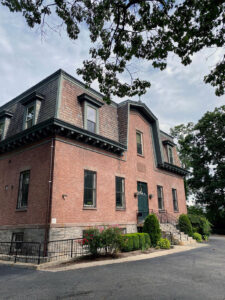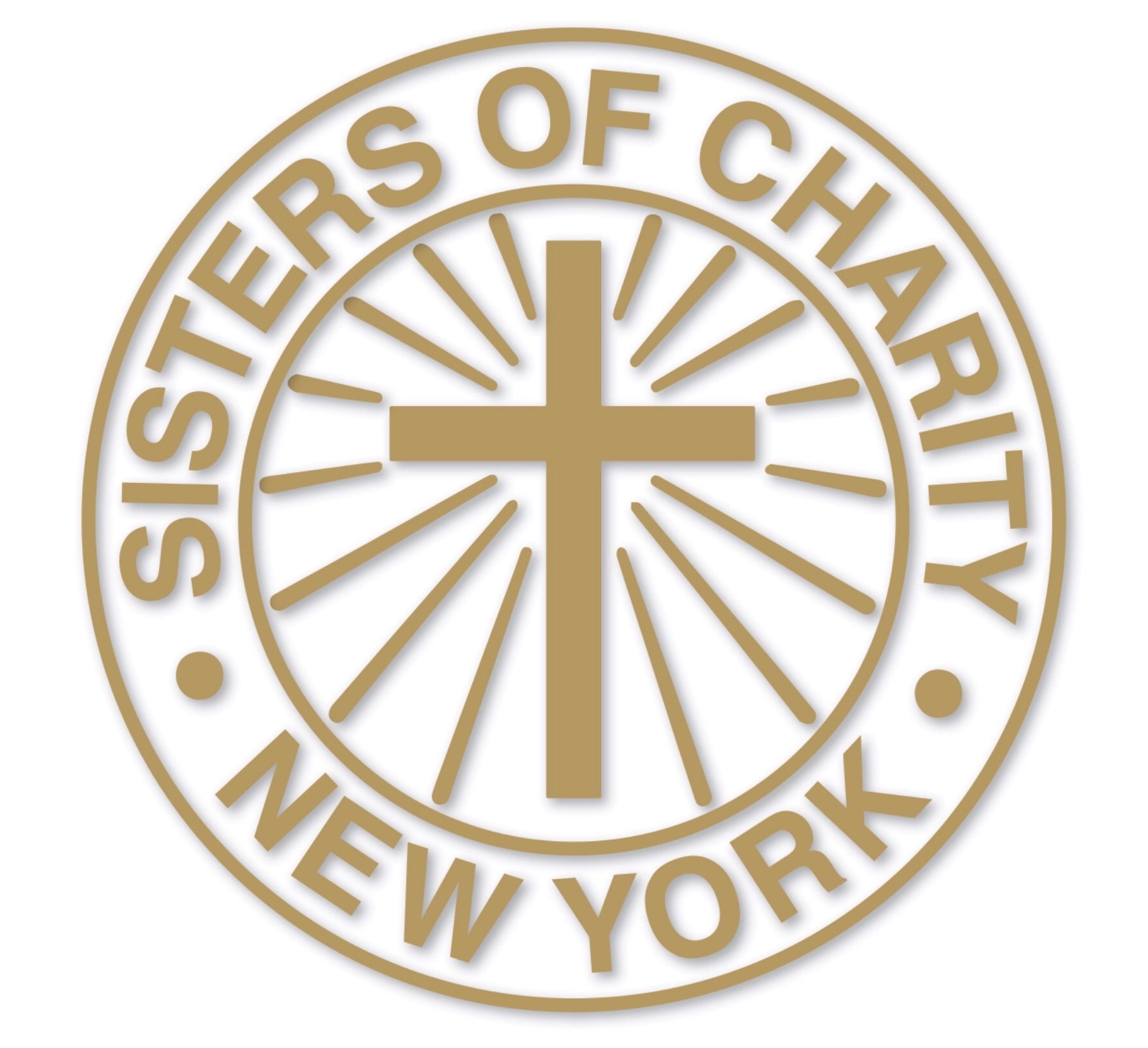By Mindy Gordon, Director, Archives and Museum
The following is from the Autumn 2021 issue of Vision.
Situated off Riverdale Avenue at the southeast corner of the Mount Saint Vincent campus is Le Gras Hall, a distinctive brick, 19th Century mansard roofed building that houses the administrative offices for the Sisters of Charity of New York. It was named after St. Louise de Marillac (Louise Le Gras, August 12, 1591–March 15, 1660) who was guided in charity by St. Vincent de Paul. Together they founded the Daughters of Charity in Paris, France. In common with Elizabeth Seton, she was a widow from a wealthy family who felt a call to minister to the poor.

The establishment of the Academy of Mount Saint Vincent on the Bronx campus in 1856 resulted in the construction of St. Vincent’s Free School, the first occupant of the building. Inaugurated in 1876, the school provided a Catholic education for children in the area without the means to pay tuition. It was funded primarily through a legacy from a former pupil of the Academy, Miss Elizabeth E. Duffy, with additional funding from a clerical friend, the Rev. John B. Daly, and subsequent donations from the pupils of the Academy in 1874 and 1876. A total of $27,000 was used to build the schoolhouse. Mrs. John Purcell, a domestic at Mount Saint Vincent, donated funds to furnish the building. Thomas C. Cornell, Esq., of Yonkers, who accompanied Mother Angela Hughes in 1856 to view the Bronx campus for the relocation of the Academy from McGown’s Pass, Manhattan, contributed his services as architect and superintendent.1
When the school opened with nearly 100 pupils on September 12, 1876 it was the crowning achievement of Mother Mary Regina Lawless, who was Superior General from 1870 to 1876. The schoolhouse was described at the time:
“There are four classrooms in the first story, each 30 x 30 feet and fifteen feet height, two smaller rooms, reception room, cloak room. Two winding staircases lead up to the grand hall, sixty feet square and sixteen feet high. The stage is on an elevated platform, twelve by twenty-eight feet, with two pleasant rooms on either side, and a large lobby and hallway in front of each room. One side of the classroom is appropriated to boys and the other to girls, each side with separate grounds, gateways, and entrances, and with separate and roomy stairways leading to the grand hall.
The building is heated, lighted with gas, and furnished throughout with all modern appliances and school fixtures. About 130 pupils have been in regular attendance since the opening of this school in September 1876. Every succeeding Christmastide convenes an immense crowd to view the beautiful crib, which is always arranged with taste, devotion, and exceeding care, in the recess formed by the stage in the grand hall.”2
The building also originally contained two large furnaces in a high stone basement, further divided into spacious halls for recreational use during inclement weather.
When St. Margaret’s Parish in Riverdale was founded in 1887, part of the school building became a temporary chapel until 1892. At that time, Mother Mary Ambrosia Sweeney (Superior General, 1885–1891) supplied the altar, vestments, and everything needed for the celebration of the first mass ceremonies at 7:30 am and 10:00 am on November 24, 1889. The following Sunday, 183 parishioners, mostly Irish domestics employed at nearby estates, attended mass. The total collection amount that day was $21.87. 3 According to a notation in the Community archives, daily Mass was offered in the chapel until St. Margaret’s Church was completed in 1892.

The Free School also served as a local parish school for St. Margaret’s until 1911, when the parish school opened. When the College of Mount Saint Vincent was opened that same year, the building, renamed Le Gras Hall, included the day students’ cafeteria on the first floor and the College auditorium on the second floor. The cafeteria remained on the first floor, and with tables removed, the space was also used as a gym until 1962. The second floor was used in turn as the College Auditorium from 1911 to 1930; the College Library from 1931 to 1942; by the Elizabeth Seton School Drama, Choir, and Physical Education departments and for the annual Commencement from 1943 to 1961; then the Elizabeth Seton Junior College maintained a student residence from 1963 to 1990.
During this period, the Mother Seton Museum, curated by the sisters, occupied the lower level of the building. The Congregation’s Juniorate resided in the building from 1964 until September 1968, followed by the Novitiate, from October 1968 until 1969. The College used the building as a residence hall from 1969 until August 9, 1971, when the administrative offices relocated from the former Motherhouse (now Founder’s Hall) to Le Gras Hall, during the beginning of Sr. Margaret Dowling’s term as President (1971–1979). Thus, wrote Sr. Mary Elizabeth Earley, “the Center brought together past and present with a strong sense of continuity and rootedness in a sturdy, lifegiving tradition.”4
After a fire in 1990 destroyed the second floor of the building, extensive renovation modernized the space as offices for Leadership and Administration on the first and second floors, and additional office space, kitchen and dining areas, and a large Community Room on the lower level. Today the Community meeting room is used for staff and Congregation events. During this fiftieth anniversary of the Sisters of Charity Center at Le Gras Hall the offices for Leadership, Sponsorship Services, Mission Advancement, Finance, Facilities, and Human Resources continue to preserve and advance the mission of the Community.
- “A Descriptive and Historical Sketch of the Academy of Mount Saint Vincent on-the-Hudson,” New York City, 18471884. New York: D. Appleton and Company, 1884, pp. 4243.
- Ibid.
- Tieck, William A. Riverdale, Kingsbridge, Spuyten Duyvil, New York City: A Historical Epitome of the Northwest Bronx. William A. Tieck: 1968, p. 166.
- Earley, Mary Elizabeth, SC. The Sisters of Charity of New York, 1960-1996. Mount Saint Vincent: The Sisters of Charity of New York, 1997, Vol. IV, p. 66.
